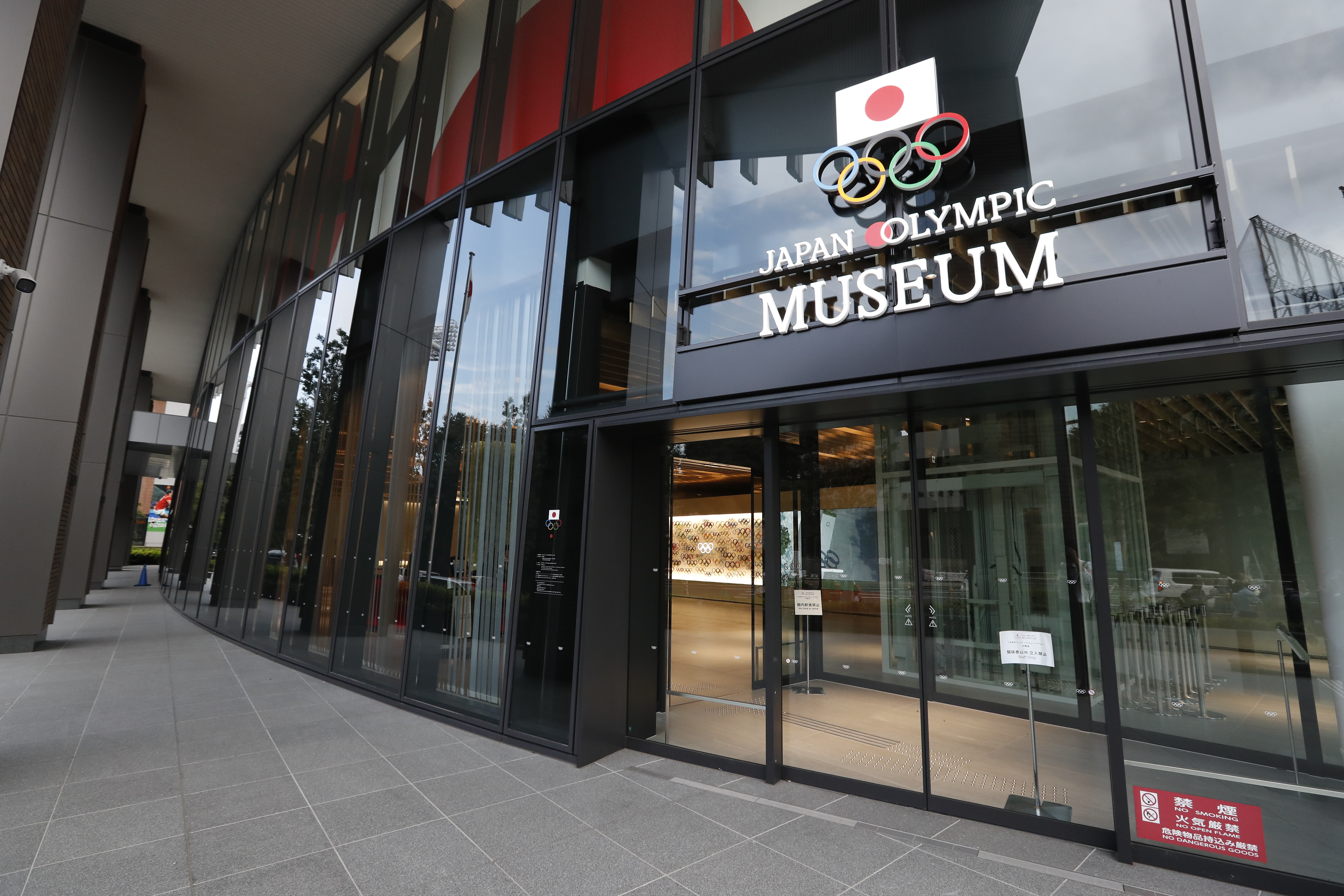© PHOTO KISHIMOTO / Japanese Olympic Committee
Catch the Spirit: Discover the Universal Appeal of The Games at Japan Olympic Museum in Tokyo
Since opening in September 2019, the Japan Olympic Museum in Tokyo introduced the Japanese Olympic Movement through its immersive multimedia exhibits under the theme of "Know, Learn, Feel, Challenge, and Think," inviting visitors to experience the “Olympic Spirit.”

Olympic Symbol (Monument Area) ©Japanese Olympic Committee
Don't Miss
- Engaging audio-visual exhibits highlighting the athletic prowess and diversity of Olympians and Paralympians
- Discover Japan's influence on the Olympic Games with a special focus on the contributions of the Japanese
- Experience the physical movements of Olympic sports and try to match the dynamism of Olympians
- Marvel at the legacy of the Olympics in the scenic Monument area
How to Get There
The Japan Olympic Museum is across the street from the National Stadium in the capital's Meiji Jingu Gaien. It is accessible by train and is a 5-minute walk from exit 3 at Gaienmae Station on the Tokyo Metro Ginza line, 10 minutes from exit 2 at Kokuritsu Kyogijo station on the Toei Oedo line, or 12 minutes from Sendagaya or Shinanomachi stations on the JR Sobu line.
Welcome Area: Sharing the Olympic Movement from Different Perspectives

Welcome Area ©Japanese Olympic Committee
Upon arrival, visitors can make their way inside to the Welcome Area. There they will see the Welcome Vision, a large screen showcasing athletes and moments from the Olympics.
The Welcome Salon is a space where special exhibitions and other activities are held to promote the Olympic Movement.
Visitors can also browse the Museum Shop for souvenirs and mementos.
Exhibition Area: Know, Feel, Learn, Try, and Think About the Olympics
In the second-floor exhibition space, visitors can learn the detailed history of the Olympic Games and Japan's participation through exhibits and realistic, immersive videos. This state-of-the-art exhibit is divided into sections that invite visitors to Know, Feel, Learn, Try, and Think about everything from the Ancient Olympic Games to the Olympic Games of the modern era. Displays featuring relay torches, costumes and sports equipment, express the excitement of past Olympiads.

The Story of Olympism ©Japanese Olympic Committee
Visitors will learn about how Japan first participated at the Olympic Games in 1912, won its first medals in 1920 and its first gold medals in 1928. To date, the Japanese delegation has won 439 medals at the Olympic Games and 58 medals at the Olympic Winter Games (as of the 2018 Winter Olympics).

Japanese Olympic Committee
The exhibit shows how Japan hosted the Olympic Games for the first time in 1964 in Tokyo, followed by the Olympic Winter Games in Sapporo in 1972, and the Olympic Winter Games in Nagano in 1998. The 1940 Tokyo Olympics, which were cancelled due to the Sino-Japanese War, are described, along with promotional posters and tickets for the Games.
Unlike past exhibitions, this one has a hands-on area. Visitors can use simulators to compare their physical abilities with those of Olympians. They can use interactive screens to experience competitions such as shooting, ski jumping and figure skating, then compare their results with the world's athletes.
The exhibit captures the spectacle of the Opening Ceremony and the community atmosphere of the Olympic Village, while shedding light on the people who labor behind the scenes to make the Games a reality. It also provides invaluable insights about the Olympic spirit through video interviews with Olympians and other athletes. Visitors also learn about the Paralympic Games and the extraordinary athletes who participate in them.

The World and the Olympics ©Japanese Olympic Committee
Monument Area
Visitors can go for a “photo finish” at the Monument Area outside the Museum. It is a popular spot to see the iconic Olympic Symbol, scale models of the Olympic torch from past Olympic Games held in Japan, and bronze statues of Pierre de Coubertin, father of the modern Olympic Games, as well as Kano Jigoro, the founder of judo.
There, visitors can also check out the Olympic Values inscribed on a bench, a record of Japan's first Olympic gold medalist inscribed on a footpath, the Olympic Motto inscribed on steps, and the locations and years of past Olympic Games inscribed on a footpath. There is so much to discover at this compact museum.
Admission is 500 yen for adults and 400 yen for those 65 years or older; high school students and younger enter for free. As part of measures to provent the spread of COVID-19, visitors need to make a reservation. For the most updated information on reservation and admission fees, please check the official website.
© Japanese Olympic Committee
Related Links
* The information on this page may be subject to change due to COVID-19.

































































